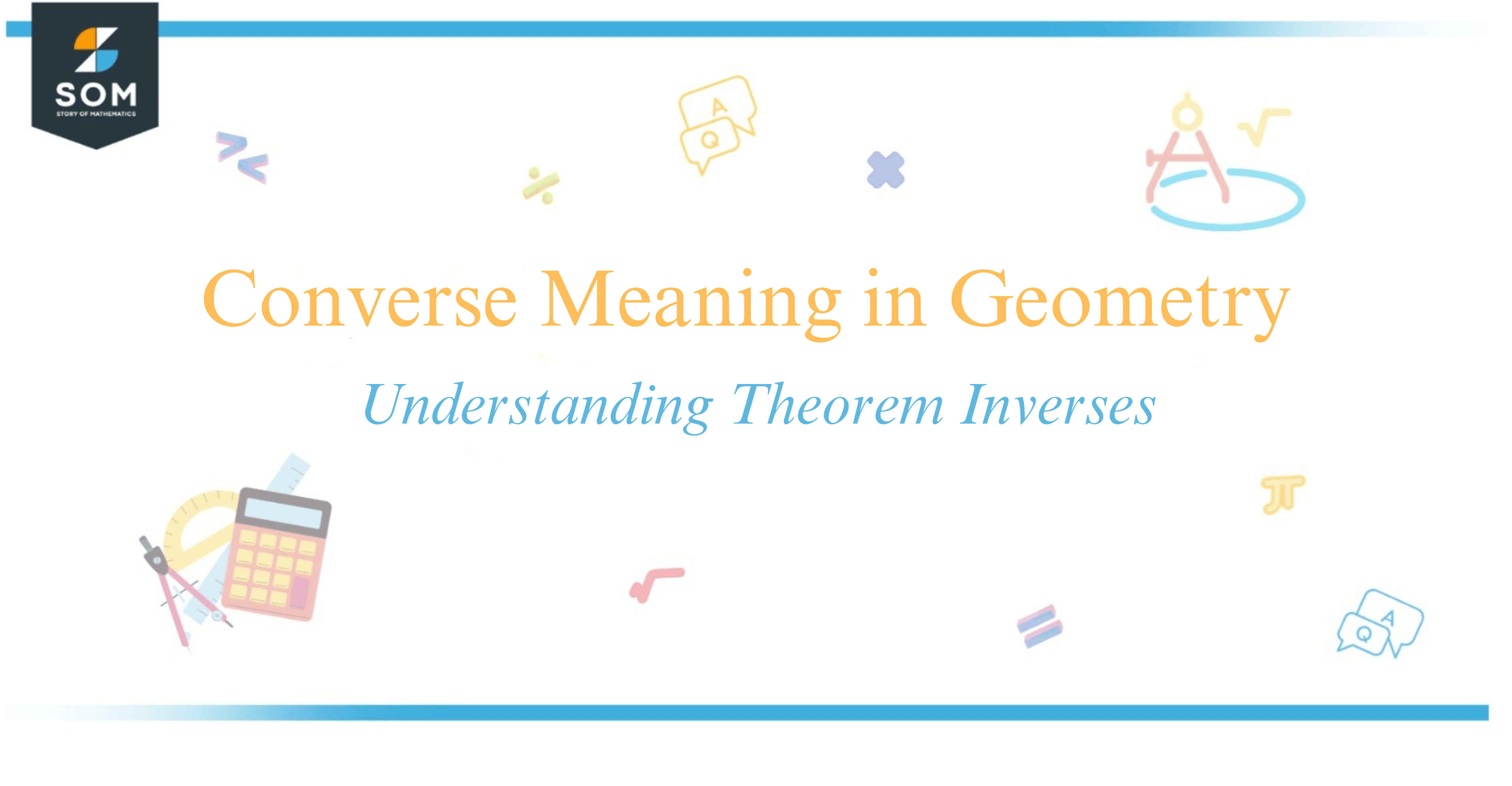
The converse in geometry refers to a form of statement that arises when the hypothesis and conclusion of a conditional statement are switched.
In a typical conditional statement of the form “If $p$ then $q$”, the converse would be “If $q$ then $p$”.
Understanding the converse is critical because it does not necessarily hold the same truth value as the original statement, which is a fundamental aspect of logical reasoning in geometry.

For instance, if we consider a simple conditional statement, such as “If a shape is a square, then it has four equal sides”, its converse would be “If a shape has four equal sides, then it is square”.
The converse may or may not be true, and assessing its validity is a key skill in geometric proofs and theorems. Let’s explore how the converse fits within the broader scope of mathematical reasoning and why it’s an intriguing concept that often challenges our initial assumptions.
Converse Meaning in Geometry
In geometry, when I work with a conditional statement, typically presented in the form “If p, then q,” there is a particular way to form a related statement known as the converse.

Constructing the converse statement involves swapping the hypothesis (p) and the conclusion (q). The converse will thus read as “If q, then p,” formatted as $q \rightarrow p$.
Here’s a simple way to remember this:
| Conditional Statement | Converse Statement |
|---|---|
| If p then q | If q then p |
| $p \rightarrow q$ | $q \rightarrow p$ |
I should be careful, though, because the truth of the converse is not guaranteed by the truth of the original conditional statement. It’s essential to examine it separately to see if it holds within the context of the geometry I am studying.
A special case arises when both a statement and its converse are true. In this scenario, the statement becomes a biconditional, symbolically represented as $p \leftrightarrow q$, pronounced as “p if and only if q.”
The exploration of logical equivalence in geometry leads me to two more related statements: the inverse and the contrapositive.
The inverse flips both the hypothesis and the conclusion and applies negation to both, forming $ \neg p \rightarrow \neg q$. In contrast, the contrapositive statement negates and swaps the sides of the original, creating a statement that is always logically equivalent to the original, symbolized by $ \neg q \rightarrow \neg p$.
| Statement | Symbol |
|---|---|
| Converse | $q \rightarrow p$ |
| Inverse | $\neg p \rightarrow \neg q$ |
| Contrapositive | $\neg q \rightarrow \neg p$ |
When examining theorems or propositions in geometry, understanding these related statements ensures a deeper comprehension of the concepts and their applications in logical reasoning.
Applications in Geometry
In geometry, converse, contrapositive statements, and the use of negations play crucial roles in understanding and proving theorems.
I often encounter the converse of a theorem, which involves reversing the hypothesis and conclusion of an if-then statement. For example, the converse of the statement “If a polygon is a square, then it has four right angles” would be “If a polygon has four right angles, then it is a square.”
Contrapositive statements, on the other hand, are formed by both negating and reversing the hypothesis and conclusion of the original conditional statement.
They are essential as they are logically equivalent to the original statement, which is a property I leverage frequently. Given the theorem “If a figure is a square, then it has four equal sides,” its contrapositive would be “If a figure does not have four equal sides, then it is not a square,” and both statements are true if one is true.
When examining the properties of geometric figures, these logic structures guide me to derive new theorems or validate existing ones.
Below is a table that illustrates the relationships between conditional statements and their converse and contrapositive forms using polygons:
| Conditional Statement (Original Theorem) | Converse Statement | Contrapositive Statement |
|---|---|---|
| If a polygon is a square, then it has four sides of equal length. | If a polygon has four sides of equal length, then it is a square. | If a polygon does not have four sides of equal length, then it is not a square. |
| If a quadrilateral is a rectangle, then it has four right angles. | If a quadrilateral has four right angles, then it is a rectangle. | If a quadrilateral does not have four right angles, then it is not a rectangle. |
As I progress through geometric problems, I pay special attention to these logical forms to make sure my conclusions are valid.
The meaning behind each statement often informs my approach to proving or disproving a given theorem. This systematic application of logic helps me and fellow mathematicians to rigorously establish truths within the realm of geometry.
Conclusion
In my exploration of converses within the realm of geometry, I’ve found that understanding these concepts enhances my logical reasoning and analytical skills.
A conditional statement, which is typically of the form “If $p$, then $q$,” where $p$ and $q$ are specific statements, lays the foundation for these discussions. The converse flips this relationship to “If $q$, then $p$.”
What captivates me is that the truth of a converse is not guaranteed by the original conditional statement.
For example, if the statement is “If a figure is a square, then it has four sides,” the converse would be “If a figure has four sides, then it is a square,” which isn’t necessarily true, as the figure could also be a rectangle or any other quadrilateral.
The utility of knowing that a conditional and its converse can create a biconditional statement—when both are true—is apparent in proofs, where we might state that “$p$ if and only if $q$” or $p \leftrightarrow q$.
Remembering that the converse of a conditional statement is just one part of the puzzle, with the inverse and contrapositive also adding depth to the study of statements, settles my curiosity for the moment.
These relationships between statements are invaluable tools in the logical structure that underpins much of geometry.
